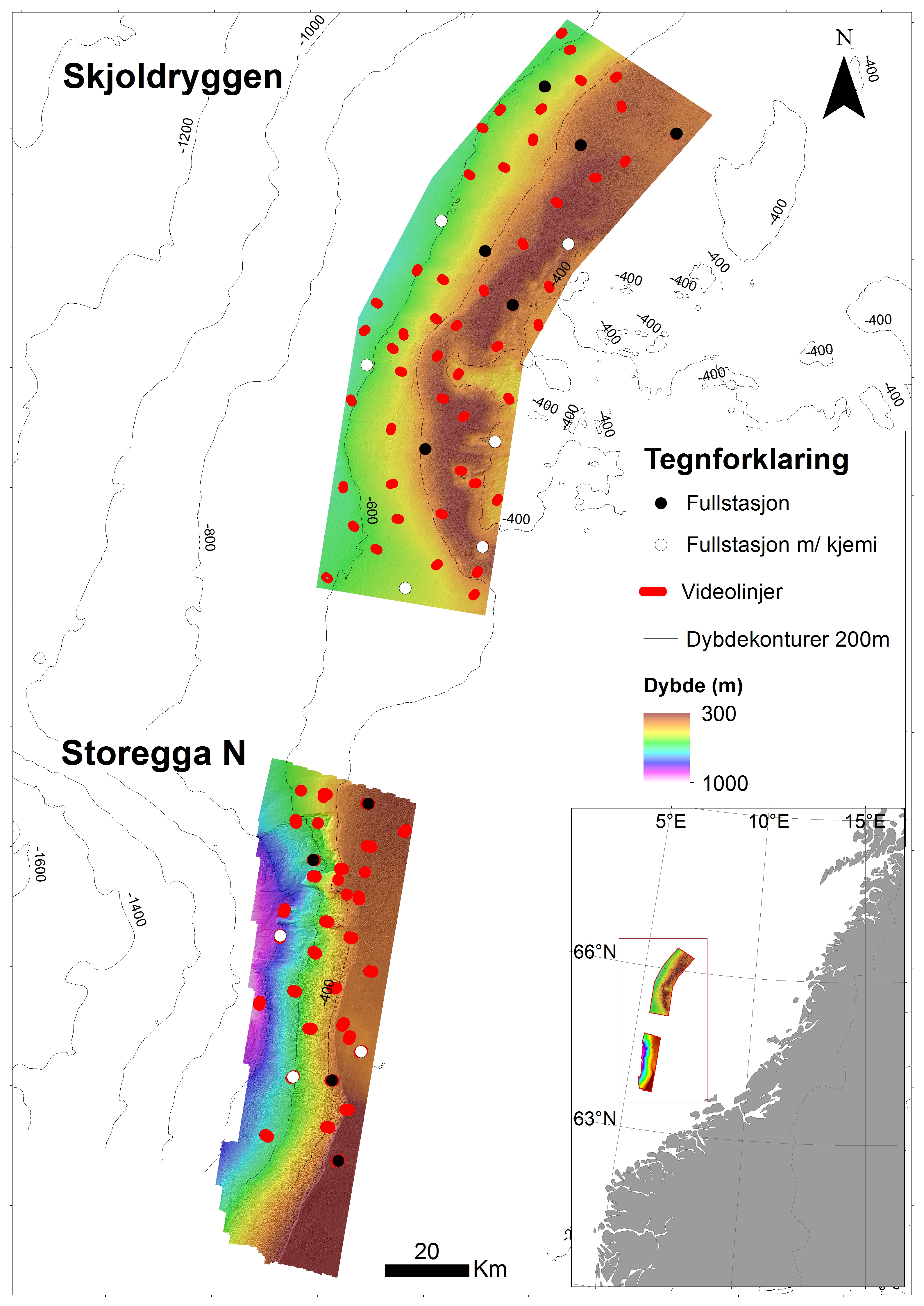
Contact
Cruise leader
Pål Buhl-Mortensen
+47 974 64 151
Communication advisor
Beate Hoddevik Sunnset
+47 55 23 85 16
908 21 630

Published: 19.06.2013 Updated: 24.10.2019
The purpose of the survey is to document and map the seabed through video and bottom samples at Skjoldryggen and, if the time schedule allows it, also Storegga. These studies are needed to identify habitats, species diversity, sediment composition and pollutants off mid-Norway. Video recordings are made by using the video rig Campod and its HD camera. Bottom samples are taken with grab, corer samples, beam trawl and epi-benthic sled.

Skjoldryggen and parts of Storegga are to be mapped at this survey. The seabed at all the marked points in the figure will be video-sampled. Black symbols indicate positions were also physical sampling are planned to be taken, using grab, boxcorer, sled and beam trawl. White symbols show positions where, in addition to other samples, samples for chemical analyses are to be taken using multicorer.
The first part of the cruise, 12-20 June, is allocated to the Skjoldryggen area, a moraine near the edge of the continental shelf. The management plan for the Norwegian Sea defines this area as being highly valuable, where the water masses are being vertically mixed and where a relatively high nutritional supplement leads to high plankton production. The area is also known for having many coral reefs, but these have not been accurately located, only roughly indicated through by-catch in fishing gears.

Pictures showing different activities on board.
So far, we have examined 18 sites, of which four have been physically sampled. In general, the surveyed localities are dominated by sandy clay with varying proportion of gravel and stone. In the shallowest areas, the bottom is dominated by stone. Here we observed hard-bottom sponge gardens including the chalice sponge, Phakellia ventilabrum, and the funnel shaped sponge, Axinella infundibuliformis. Within depressions on the shelf, we have observed seapens and burrowing megafauna communities. At one site we found bamboo coral (Isidella lofotensis) which otherwise is more common within fjords than on the shelf and is one of the few gorgonian corals growing on soft bottoms. On the slope, at about 500-600 m depth, the Greenland halibut is common. The active fisheries on this species are apparent from the frequent trawlmarks observed.

Photos of sponge forest on hard bottom at 290 meter depth at the northern part of the Skjoldryggen area. A number of leaves and funnel-shaped, and also branched sponges in high densities occur here.
We have two guests on the cruise, Arnaud Pourchez (graduate student at the University of Paris) and Sarah Gerken (professor at the University of Anchorage, Alaska). Arnaud studies the distribution of fish and fish communities using the MAREANO material, and is additionally gaining general survey experience. Sarah is a crustacean expert, in particular the group Cumacea, or hooded shrimps, and she uses the sampled material to study coloration and morphology of living comma crayfish and take samples of selected animals for genetic analysis.